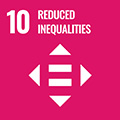- Docente: Roberto Impicciatore
- Credits: 9
- SSD: SECS-S/04
- Language: Italian
- Teaching Mode: Traditional lectures
- Campus: Bologna
- Corso: First cycle degree programme (L) in International Development and Cooperation (cod. 8890)
-
from Sep 17, 2024 to Dec 13, 2024
Learning outcomes
The course addresses the main issues related to population dynamics in developed and developing countries. By the end of the course, students will be familiar with: the main evolutionary theories guiding the phases of demographic transition (in fertility and mortality); the key demographic and population development indicators; and the appropriate statistical methodologies for analyzing data from major demographic and social surveys, particularly those conducted by international organizations.
Course contents
Program
The course aims to develop a deep understanding of the evolutionary mechanisms of populations and the relationships between individual demographic behaviors and contextual factors. Starting from a long-term analysis that examines the development of the global population throughout human history and the impact of major historical events, the course will address recent trends in fertility, migration, family dynamics, youth conditions, mortality, and health.
Beginning with a global perspective, the course will then focus on the specificities of the European and Italian populations, addressing highly relevant issues such as the debate on migration and migrant integration, low fertility rates, delayed transition to adulthood, population aging, the role of family ties, and the spread of new forms of union. Reflections on the future of the population, both globally and with a particular focus on Italy, will also be presented.
The analysis of these topics will be deepened through the study of basic tools of demographic analysis, including: measures of aging and fertility, growth rates, the Lexis diagram, and life tables.
The interdisciplinary approach of the course aims to highlight the complexity of demographic research, while developing quantitative analysis skills. By the end of the course, students will be able to:
• critically evaluate demographic trends, situating them within the main socio-demographic theories;
• analyze and interpret socio-demographic publications from leading international organizations;
• select and evaluate the main sources available on demographic dynamics;
• choose and apply demographic and population development indicators;
• integrate demographic knowledge, based on empirical evidence, with skills in the social, economic, geographic, and political fields.
Contents
The long-term evolution of the world population. Demographic mechanisms of adaptation and self-regulation. Major epidemics in history: from the plague to Covid-19. Population growth and economic development. The demographic transition in Europe. Recent demographic trends in Europe and Italy (low fertility, mortality, aging). Reproductive choices and the welfare system. Gender relations and work-family balance. Italy's demographic history. The exceptionalism of Italian demography. Population structure and aging in Italy. Youth and the delay syndrome. The importance of family ties in shaping life paths.
Demographic sources. Measures of population growth. Elements of Demographic Analysis (life courses and the Lexis diagram; crude and specific measures of mortality and fertility). Survival analysis and life tables. Climate change and its impact on demographic dynamics.
International migrations from a global perspective. Theories explaining migratory movements. Myths and realities of international migration. The Italian migration context. The children of immigration. Internal migrations and the role of marginal and central areas. The demographic future. The impact of climate change on migration.
Readings/Bibliography
- Massimo Livi Bacci, Storia minima della popolazione del mondo. E uno sguardo al futuro. Il Mulino, Bologna, 2024 (Sixth edition)
- Alessandro Rosina e Roberto Impicciatore, Storia demografica d’Italia. Crescita, crisi, sfide. Carocci, Roma, 2022
- Alessandra De Rose e Alessandro Rosina. Introduzione alla demografia. Analisi e interpretazione delle dinamiche di popolazione. Egea, Milano, 2022
- Teaching tools provided by the teacher during the course on the Virtuale [https://virtuale.unibo.it/] platform.
Teaching methods
Lectures (58 hours); workshops/seminars (2 hours); exercises also using Excel software (12 hours).
The applied nature of the course and the presence of interactive activities during the lessons make class and exercise attendance highly recommended.
Assessment methods
Written exam in person during one of the six scheduled sessions. Students are required to answer some theoretical questions and complete exercises to demonstrate their ability to apply the acquired tools and interpret the results.
During the exam, the use of a (non-programmable) calculator is allowed, but consulting textbooks, notes, and electronic devices is not permitted.
Teaching tools
Teaching tools (slides, exercises, articles, and additional resources) will be made available online on the Virtuale platform during the course.
Use of computer tools for spreadsheet processing (Excel or similar) is required.
Office hours
See the website of Roberto Impicciatore
SDGs




This teaching activity contributes to the achievement of the Sustainable Development Goals of the UN 2030 Agenda.
